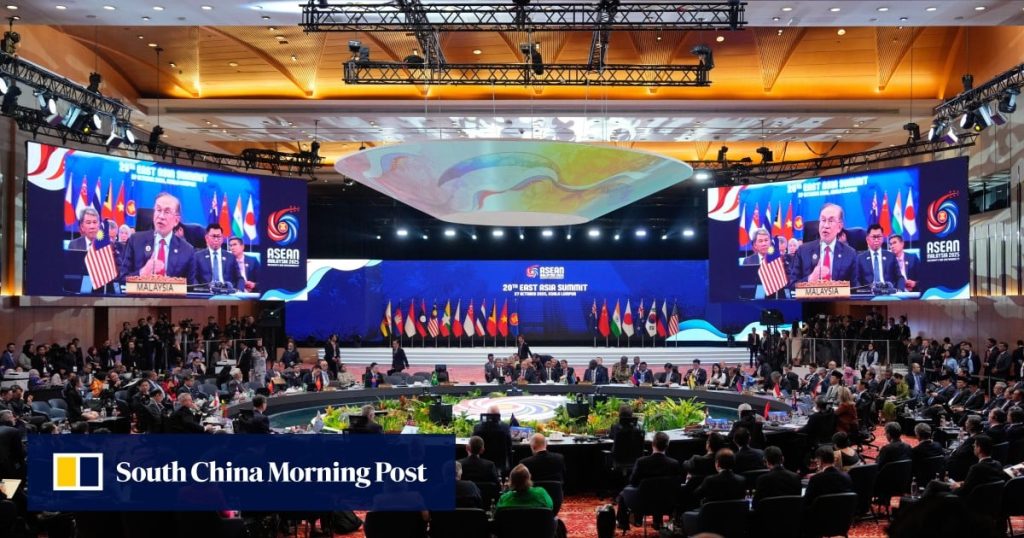The world’s largest trade agreement was given a jump-start on Monday, as leaders met in Kuala Lumpur at a “pivotal” time for the global economy, desperate to turn the pact into tangible gains as sweeping US tariffs threaten to slow growth across Asia-Pacific.
The Regional Comprehensive Economic Partnership (RCEP) covers 30 per cent of the global economy, with Asean members at its core alongside East Asian giants China, Japan, South Korea, as well as Australia and New Zealand. The pact was signed in 2020 as an antidote to US protectionism.
But RCEP has struggled to become a relevant collective force, with its members clinging to restrictions and quotas to protect their key domestic industries.
Malaysia’s Prime Minister Anwar Ibrahim said “the strategic importance” of the partnership “is clearer than ever”.
“It is the first gathering of RCEP leaders since the signing of the agreement in 2020 at the height of the Covid pandemic,” said Anwar, who is chairing the Association of Southeast Asian Nations summit. “And again, we meet at a pivotal moment.”
Formed from the wreckage of the US-led Trans-Pacific Partnership, the RCEP aims to streamline trade and investments between its members and grow a regional economy already worth as much as US$30 trillion annually, according to some estimates.


